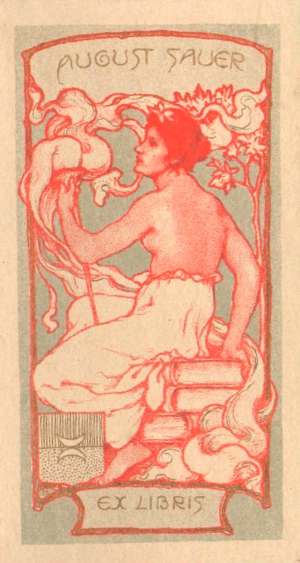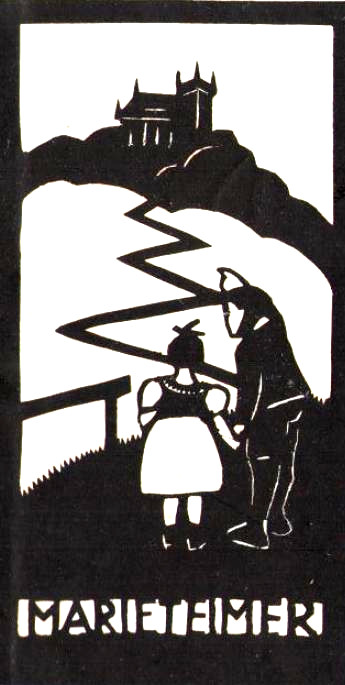Ex Libris: memento of the original owner
Published on 23 March 2015
The term Ex Libris originates from Latin, meaning “from the books”. In the European cultural context, Ex Libris first appeared in Middle Ages and was used to indicate the ownership of a book. The form varied and it has evolved in the course of time, from a simple insertion of the owner’s name to a stamp and even works of graphic art (a small label pasted into a book, with a woodcut, copper plate engraving, linocut, etc.) In this article, you will find bookplates from books included in the project Books Discovered Once Again.
When an owner wished to mark a large number of books with their own mark, it was found best to use pasted labels. In the past, Ex Libris were used mostly by nobles, clerics and various institutions. Such bookplates would typically bear the owner’s coat of arms or a family crest, and in some cases also the words "Ex Libris", "Ex Bibliotheca”, a specific family motto, name or other text.
Ex Libris bookplates as work of art
In the late 18th and the early 19th centuries, new graphic motifs (for example, landscapes and allegories) began to appear on bookplates besides coats-of-arms and family crests. Their production and printing were quite expensive. During the 19th century, utility bookplates emerged, printed with conventional printing technology. The content and graphic style of a bookplate often attested to the character, interests, habits, education, occupation and taste of the owner of the book. Thus we can perceive bookplates as a reflection of the character of the book owner. Bookplates were created for book owners by artists and graphic artists. Thus we can find many bookplates that were made under the influence of artistic styles, such as Impressionism, Art Nouveau and Avant-Garde. The artist who makes a bookplate must be able to combine lettering with an artistic motif.
Among the famous Czech bookplate creators are, for example: the Czech-French Surrealist female artist Toyen; the graphic artist, draughtsman, painter and writer Josef Váchal, whose work was influenced by Symbolism, Art Nouveau and Expressionism; the graphic artist and architect František Bílek, who created in the spirit of Symbolism and Art Nouveau; and many others.
One owner had several styles of bookplate
Book owners might not have settled for only one symbol; they often acquired several. We can also find special bookplates indicating books by the same author, the owner’s favourite books or books of certain genres (travel journals, historical books, adventure literature, etc.). There are also bookplates indicating scholarly literature.
Collecting
From the 19th century on, Ex Libris bookplates became of interest to collectors who were interested both in historical and utility bookplates and in bookplates made primarily as collectibles. In the late 19th century, societies started to emerge gathering Ex Libris enthusiasts and collectors. These societies made the expansion of private collections easier. At present, mostly modern bookplates are collected. Those dating from before the 18th century are rarely collected, as they are often in poor condition.
Database of Ex Libris in the project Books Discovered Once Again
In the project, we are creating a database of bookplates and stamps because these document the ownership of books and the change of owners. The aim of our project is to document the stories of books; to find who a book originally belonged to, by whom it was seized or confiscated and how it found its way to the National Library. Bookplates and stamps help us to do just that. Historical bookplates may be of interest to historians and heraldicians whose field of expertise is ancestral coats-of-arms, as well as to librarians and genealogists.

